3 Michelin Star Chef Eric Pras on Maison Lameloise’s Evolution
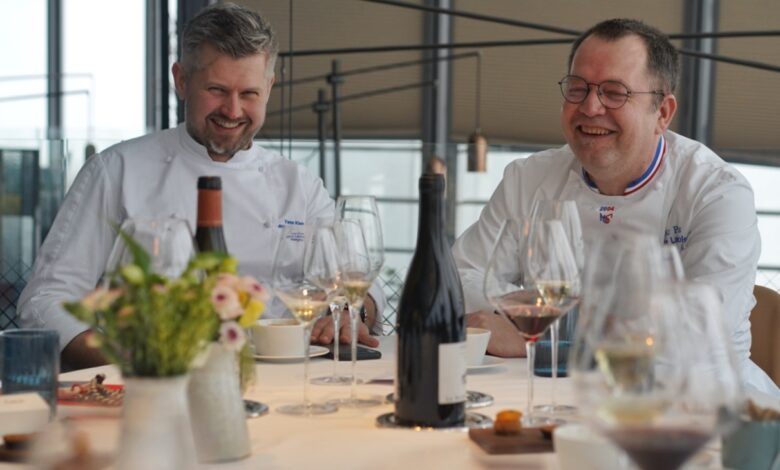
Taking a three-Michelin star culinary experience with over 90 years of heritage out of its quaint hometown of Chagny, Burgundy to Shanghai is no small feat.
Luckily, six years ago, Chef Eric Pras of Maison Lameloise Chagny was up for the challenge – one that escalated and evolved through COVID and beyond.
Now, over half a decade on, Pras is still here and still going strong – very strong – maintaining his three Michelin star status in France, along with a Michelin star in Shanghai, awarded in 2020.

Chef Eric Pras, Image by Sophie Steiner/That’s
Pras himself boasts a career of remarkable Michelin pedigree, having worked with Michel Troisgros, Bernard Loiseau, Pierre Gagnaire and Régis Marcon – all chefs with three-star restaurants – from the tender age of 15.
Yet, he still remains humble, motivated, and dedicated to his craft – the motto “always push forward” remaining one of his core tenets.
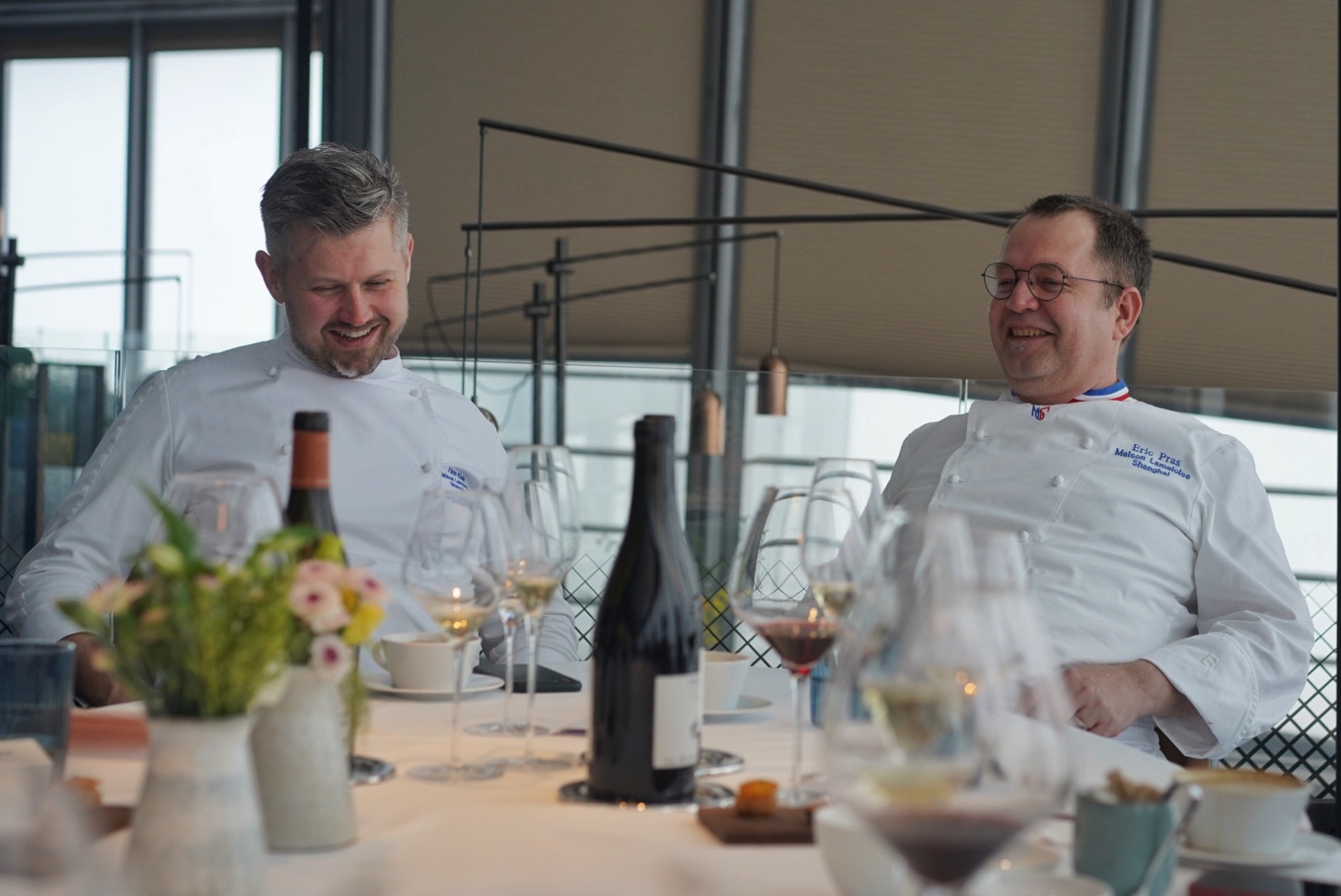
Cheff Yann Klein (left), Chef Eric Pras (right), Image by Sophie Steiner/That’s
On his most recent return to Shanghai, to launch the spring 2024 menu alongside Chef de Cuisine Yann Klein, we caught up with the dynamic duo to hear about the biggest challenges and rewards over the last six years, their thoughts on the ever-changing Shanghai fine dining scene, and what the future holds for Maison Lameloise Shanghai.
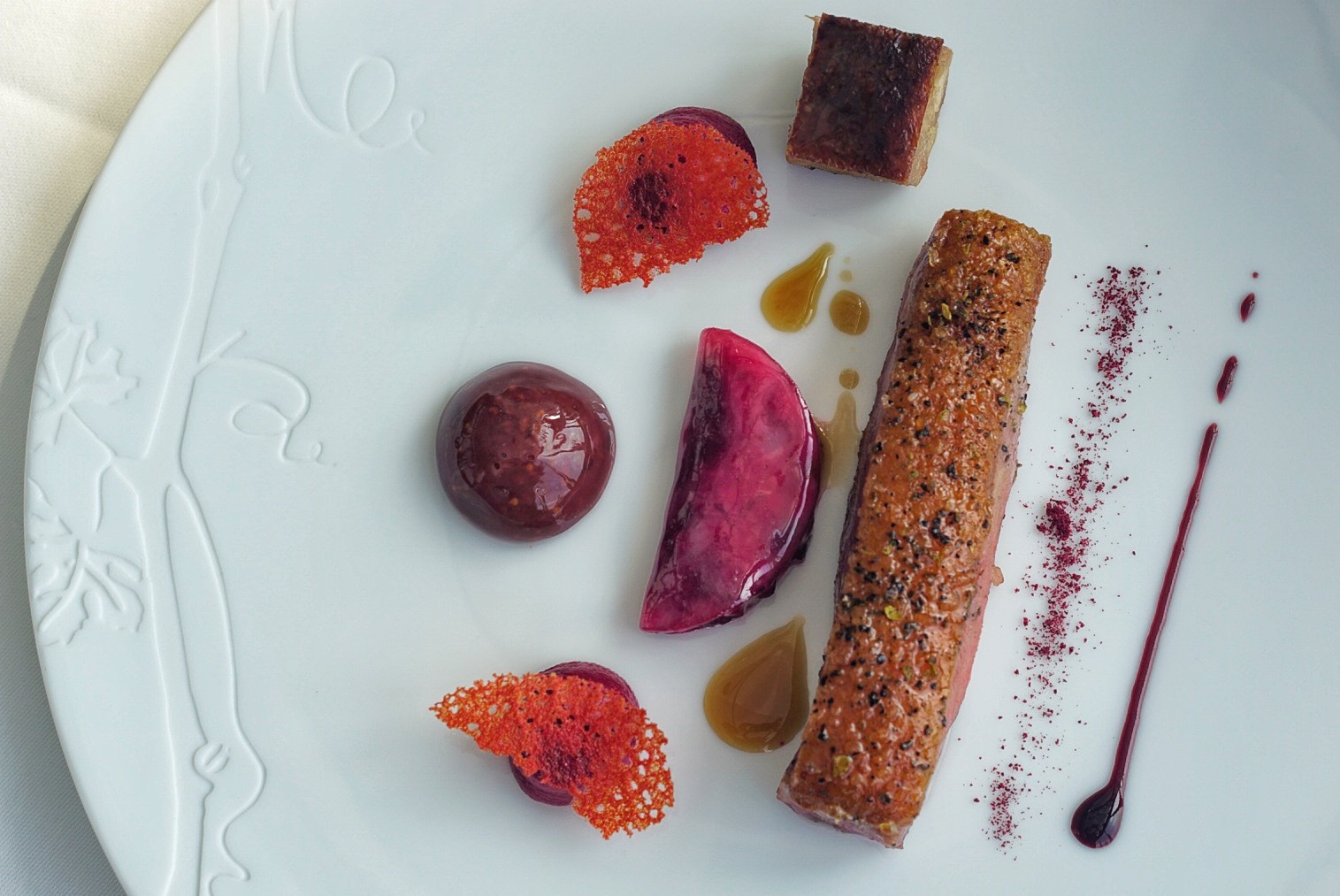
Image by Sophie Steiner/That’s
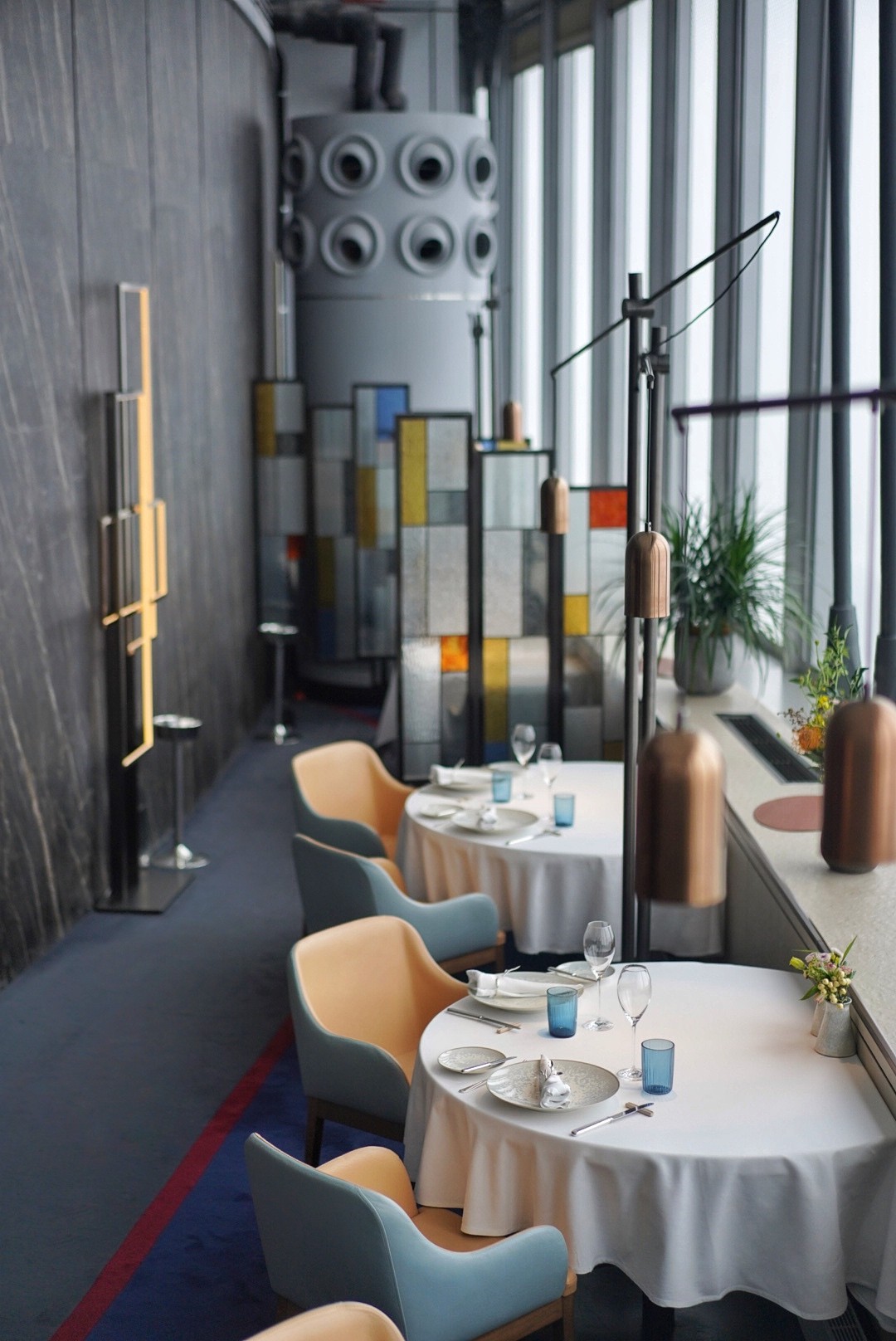
Image by Sophie Steiner/That’s
It’s been nearly six years since you opened Maison Lameloise – the sister restaurant to your original Bourgogne, France venue of the same name – here in Shanghai.
What has been your biggest learning experience throughout this process? If you could give any piece of advice to the version of yourself six years ago, what would it be?
Eric Pras: This is a very tough question, and I’m probably not going to answer it how you might expect.
A lot has happened in the last six years, and – at the end of the day – I’m still here, despite COVID and all the other challenges the globe has thrown our way. So, I don’t really have anything I’d do differently.
I am a very analytical person, and for three years before I entered the China market, I worked diligently and carefully crafted my dream venue through a series of decisions about various situations, team members, menu concept, and strategy.
The result of that dream is the Maison Lameloise Shanghai you see now.
My plan was never to come to Shanghai and make a revolution; instead, I wanted to slowly and respectfully introduce the city to a taste of Burgundy, so that diners may learn more about French cuisine and gain interest in it.
Now, that doesn’t mean I don’t think the restaurant should change; on the contrary, I am all about moving forward and continuing to grow this project here in Shanghai, and it has progressed immensely since opening, all for the better.
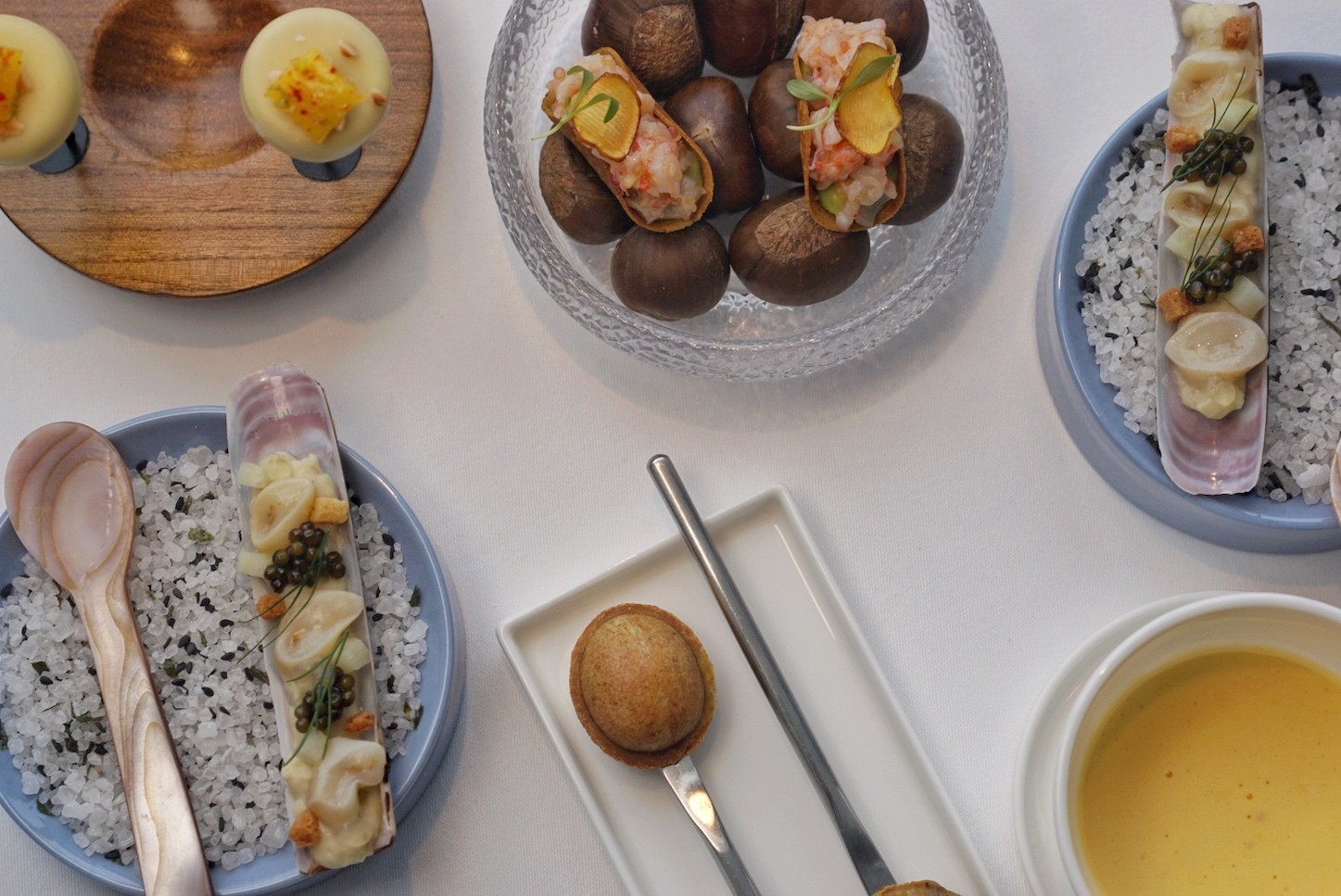
Image by Sophie Steiner/That’s

Image by Sophie Steiner/That’s
What has been the biggest challenge and biggest reward of opening a second location of Maison Lameloise on the other side of the world from where you live?
Eric Pras: The biggest challenge has been that Chagny (in Burgundy, France) is a very traditional, historic and small town of less than 6,000 residents. On the other hand, Shanghai is an ultra-modern metropolis of 25 million people.
Bringing the spirit of Maison Lameloise in France here to Shanghai – a place with an entirely different venue, team, and culture – has been a real challenge.
Many of the front-of-house staff in France have worked at Maison Lameloise for 15-20 years, and they embody the ethos of the brand. So, in Shanghai, we needed to find the right people to create and maintain that same sentiment.
On the other side of the coin, having Shanghai customers gain so much interest in our cuisine that they then travel to Burgundy to experience dining at the original location is the utmost reward; that means we are achieving what we set out to do.
Similarly, all of the rewards we receive, be it international accolades – like Michelin stars, World’s 50 Best, etc. – to local awards – like 2023 French Fine Dining Restaurant of the Year from That’s Shanghai – help to keep our team motivated in the day-to-day work.
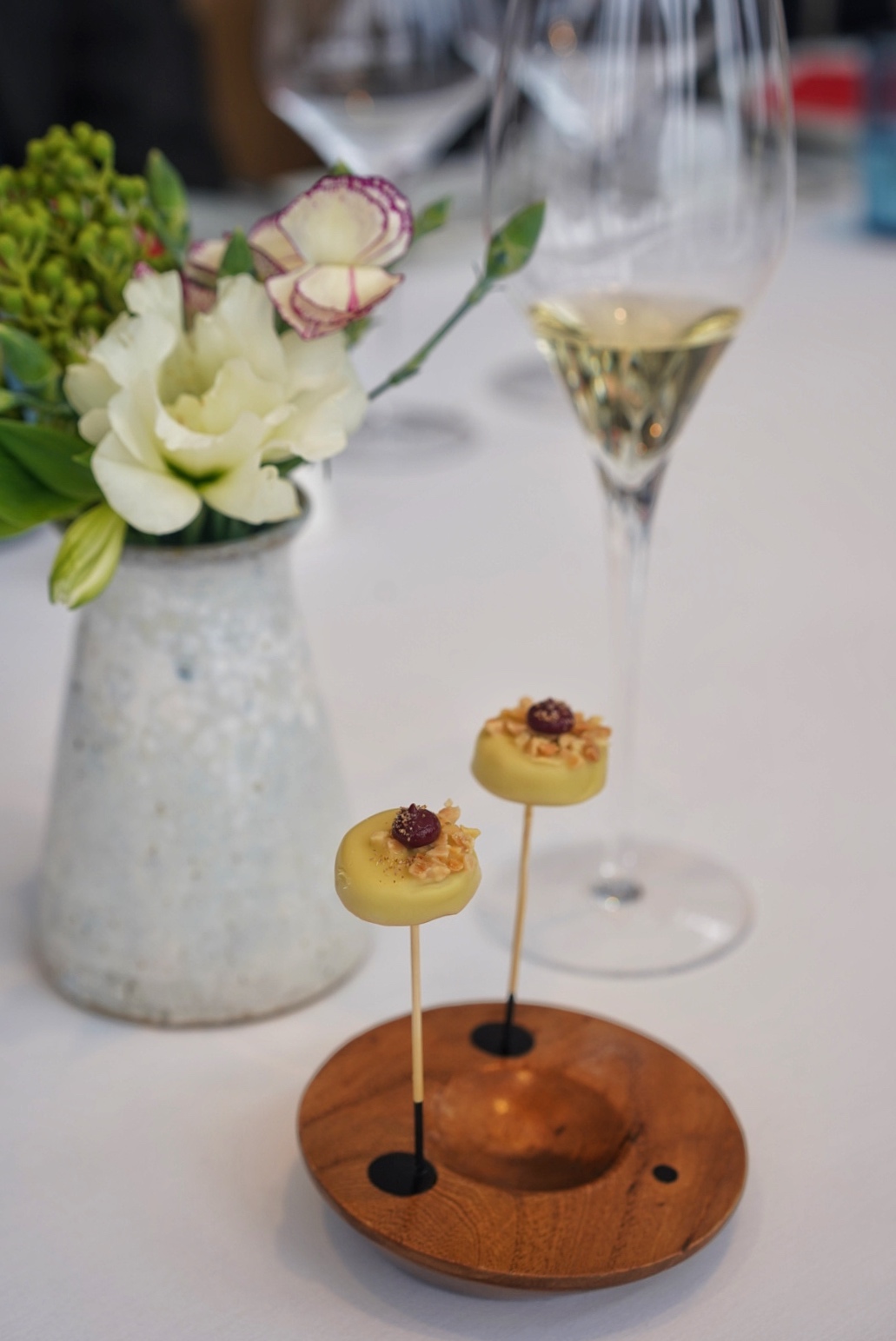
Image by Sophie Steiner/That’s

Image by Sophie Steiner/That’s
What has supported you in maintaining your three Michelin star status at the original Maison Lameloise location in France?
Eric Pras: Service, service, service. Every single day, every single round of service, we must deliver the highest quality to our customers on all fronts. Consistency is key to moving forward.
What I was doing six years ago is totally different than what I am doing today; it’s always a constant evolution as I’m continually inspired by what’s around me.
I am not a man of routine. Yet, I understand and value the importance of routine when it translates to unwavering, superior quality service for our customers.
The Michelin Guide comes out in France in just a few weeks, so we will find out if all this consistency has paid off for another year in a row.

Image by Sophie Steiner/That’s
And how do you translate that same recipe for success here in Shanghai?
Eric Pras: There are three main people that really helped me open Maison Lameloise Shanghai: Chef de Cuisine Yann Klein; Restaurant Director Pierre Lafargue (who recently left, but first trained in Kevin Chatain); and Sous Chef de Cuisine Alexandre Tanton.
These members worked for years at the original location and really understood my mindset and vision for Maison Lameloise Shanghai, and they were (and continue to be) integral players in translating that vision to reality, recreating that same spirit here in Shanghai.

Image by Sophie Steiner/That’s
What do you see as the main differences – in clientele, vibe, menu, and culture – between the two Maison Lameloise venues? And what role do you play in helping to bridge the two together?
Yann Klein: The entire dining experience in France compared to China is totally different.
In France, it’s common to stay at a table four or even five hours; in China, the maximum time tends to be about two and half hours, so we needed to adapt our speed of service to the local market.
Another major difference is that in Shanghai, we have an incredible view – one of the best in the city – but in Chagny, there is no view, the focus is fully on the plate.
Of course, there are many more differences; but, at their core, all people like to eat, drink and enjoy themselves, regardless of country of origin, and we are here to make that experience memorable.
For me, my role is to make sure that the experience of Burgundy is translated to guests, while simultaneously adapting it to the local market.
So, while some of the minor details – speed, portion size, seasoning, etc. – may change slightly, every service requires me to give a piece of Burgundy to every guest.
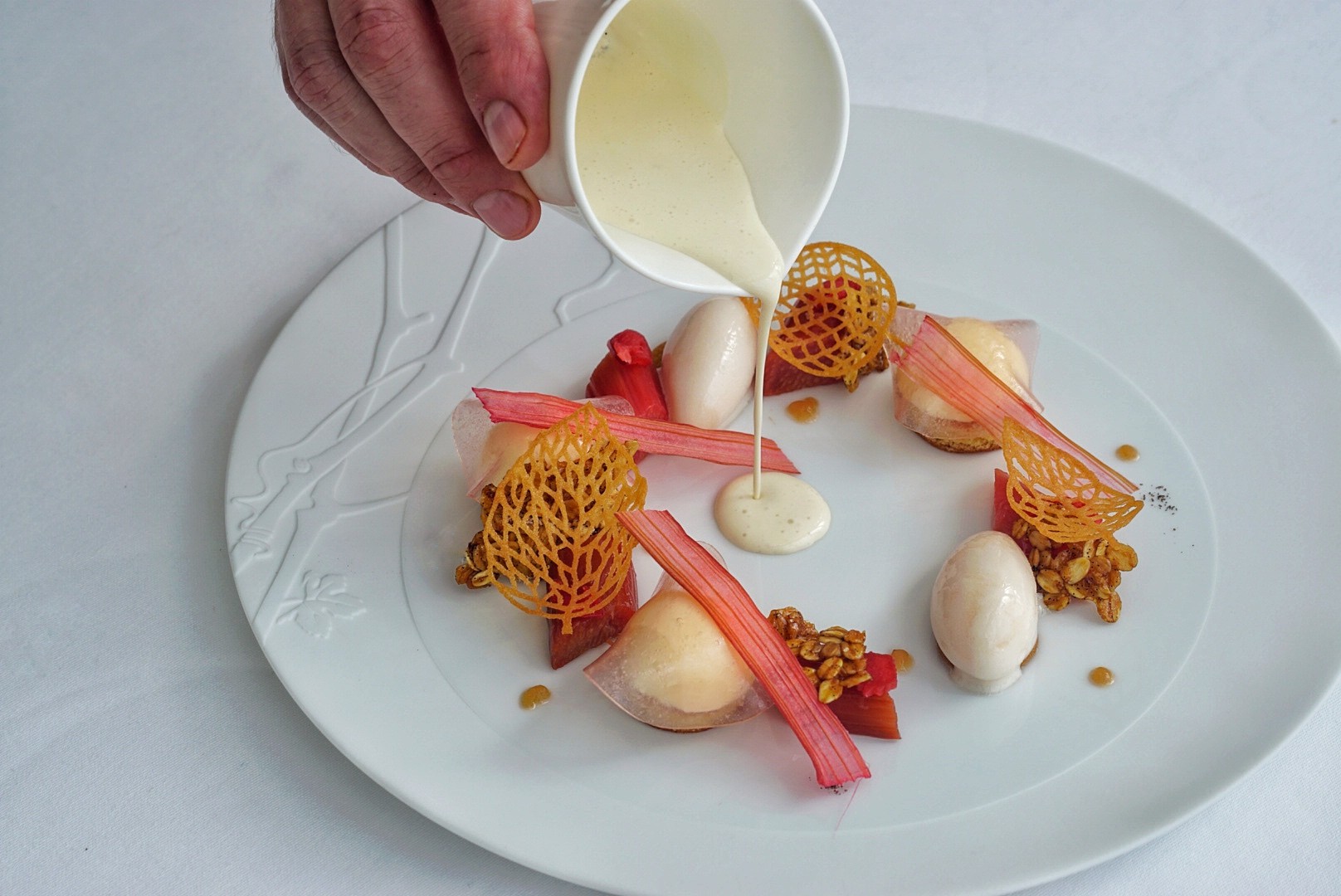
Image by Sophie Steiner/That’s
How has the original concept for Maison Lameloise Shanghai evolved over the last six years?
Yann Klein: When we first arrived, we originally thought we would just copy and paste what we did in France to an extent – in regards to food suppliers and dish execution.
I had a fisherman in Brittany, France sending me photos of them packaging up the fish, and 36 hours later I would be unboxing that same fish in Shanghai.
However, this proved to be both impractical and expensive… and ultimately impossible once COVID started.
So, we began to focus instead on sourcing here, and what we found is a multitude of new ingredients – from produce to proteins – to work with that really allowed us to expand in ways we hadn’t first anticipated.
Eric Pras: Along those same lines, we also learned to adapt to the local market in terms of taste and palate, which go hand-in-hand with local ingredients and local cooking techniques.
For example, I first tasted sea cucumber here in Shanghai, and ultimately used it in a dish paired with foie gras and cooked in the style of Burgundy red wine and beef stew [Beef Bourgogne]. This amalgamation of flavors proved to be the perfect marriage of French and Chinese cooking and ingredients.
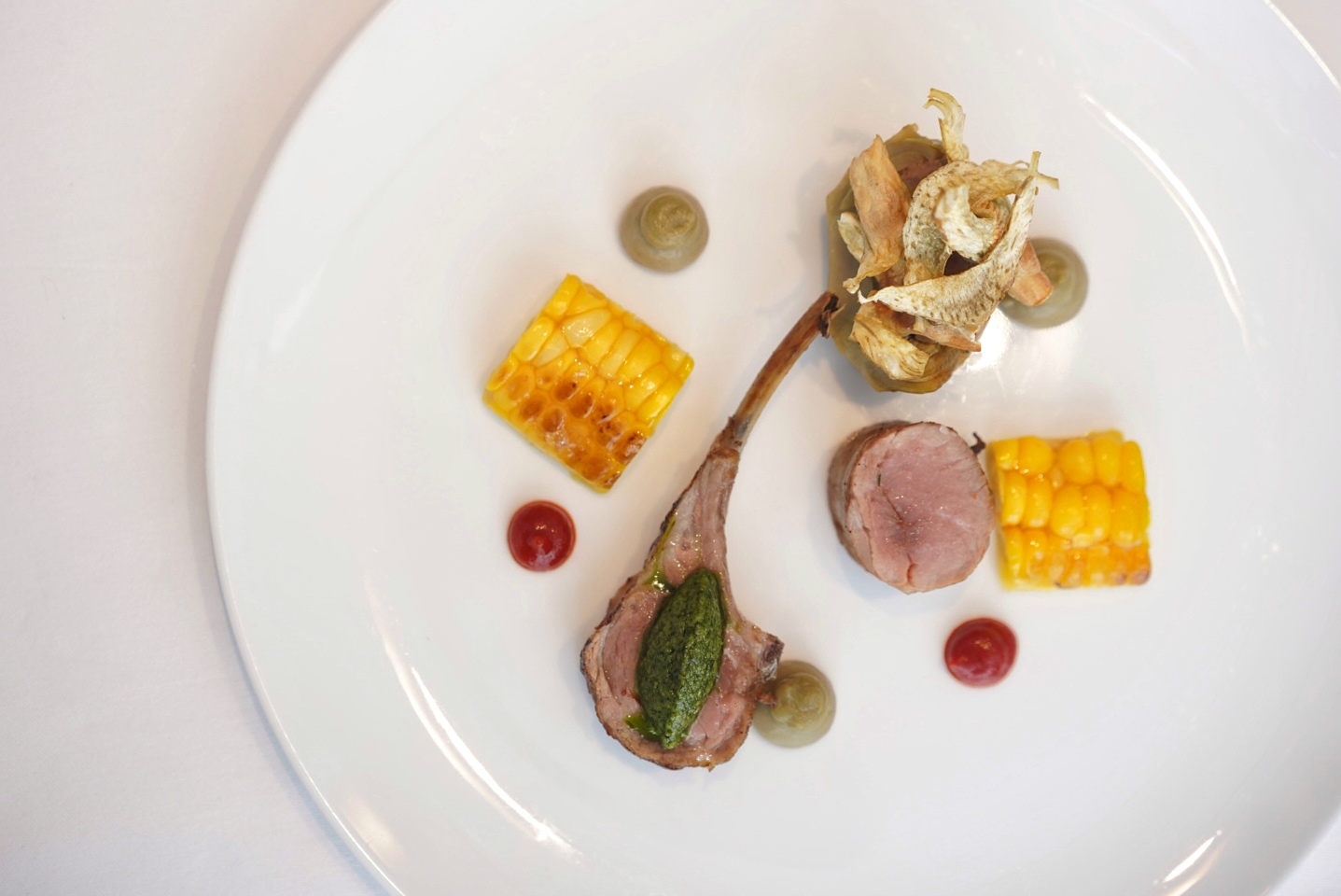
Image by Sophie Steiner/That’s
What has been your favorite local ingredient to work with? And how did you work to incorporate that ingredient together with French cooking techniques?
Yann Klein: I have two I’d like to share about. First, this is a different take on the tale ‘Mary Had a Little Lamb.’
Milk-fed young lamb is a common ingredient we regularly work with in Burgundy. The lamb is young – usually only two to three months old – which results in tender meat, but with a less gamy flavor.
After COVID began, we couldn’t source from France anymore, and it took us over a year and a half just to receive government approval to even start speaking to farmers out in Xinjiang to work with us.
For nearly three years we didn’t have milk-fed lamb on the menu, since it took us that long to sort the whole process – find a farmer supplier we could work with, and finalize the supply chain.
When we received our first shipment of milk-fed lamb – this time locally-sourced, but still just as high of quality – this felt like a major accomplishment.
We cook the local lamb in the exact same way we do in France, a match between the two cultures, bridging ingredients and cooking techniques.
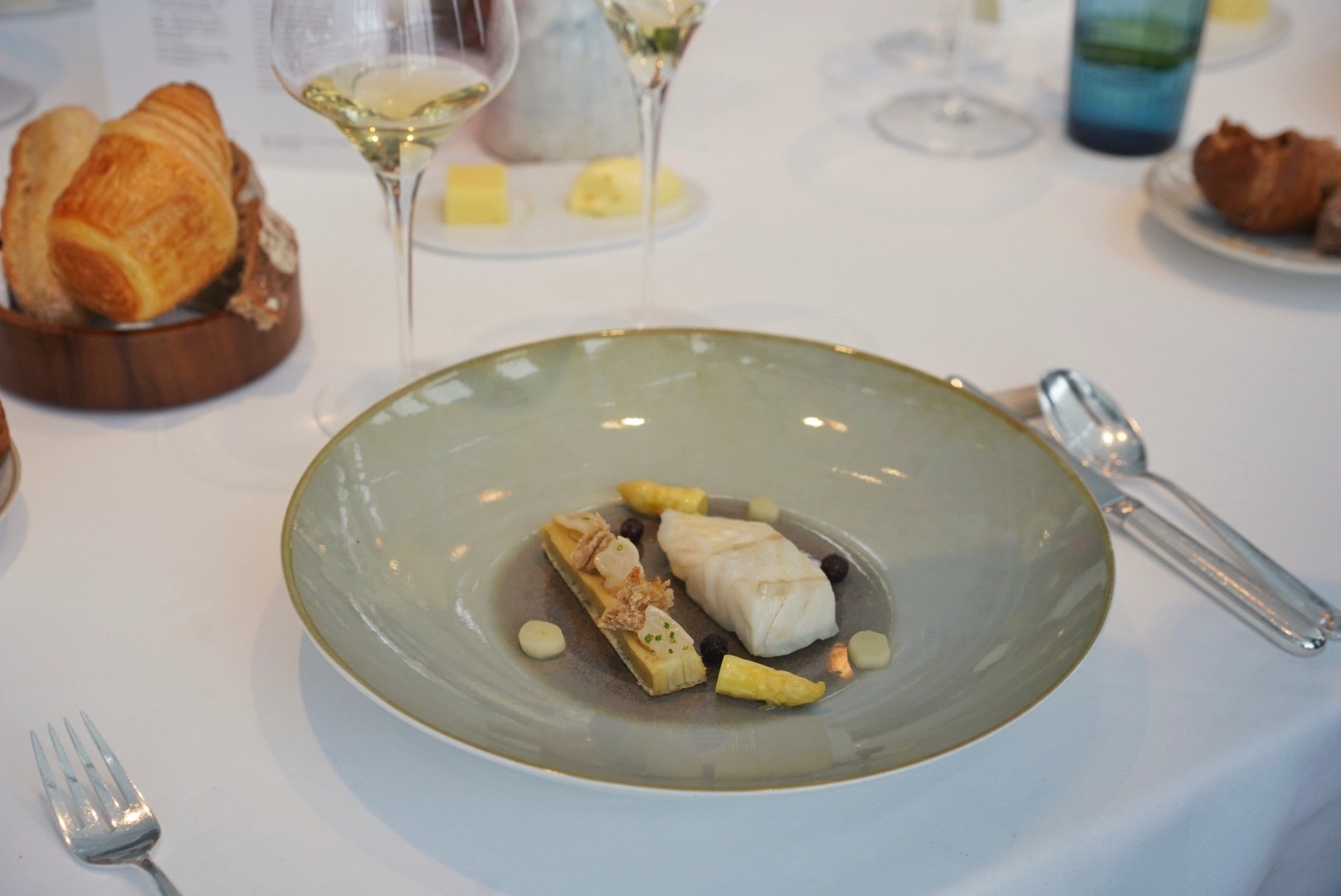 Image by Sophie Steiner/That’s
Image by Sophie Steiner/That’s
Another example is the Coral Grouper we have on our newly launched spring menu.
This is a type of fish not native to France. But, after tasting it at a Cantonese restaurant where they steam the entire fish and serve it whole, we were immediately intrigued by its firm yet supple texture.
We now use this local fish, but cook and present it in a French way; it took us creating more than six different iterations of the dish before settling on how we wanted to showcase this regional protein source, combining the flavors and techniques of France with the ingredients of China.
Yann, what has been the biggest challenge and biggest reward of being Chef Eric Pras’ “boots on the ground” in Shanghai?
Yann Klein: The biggest challenge has been replicating the spirit of Maison Lameloise Chagny here in Shanghai.
I spent five and a half years in France at Maison Lameloise, so I had that understanding of the concept and feeling there in mind, but it wasn’t so easy to convey that to the local team, many of whom hadn’t left China before.
But, I am lucky to be a part of a team that is so open and willing to learn, and this has helped immensely in sharing the same sentiment across the venues.
The biggest reward was having Chef Eric Pras’ trust in me to move over to Shanghai; I was just 27 years old when we first started to discuss this opportunity, and only 32 when we received a Michelin star in Shanghai – a dream come true.
That said, I also understand that – despite this success – it’s important to remain grounded and keep my head on my shoulders; just because we have won awards doesn’t mean I can let my ego run wild.
My goal is to focus on continuing the success of the restaurant and the entire team.

Image by Sophie Steiner/That’s
Borders are now fully open, and internationally-acclaimed chefs are once again setting their eyes on post-COVID Shanghai – for example, Frederic Anton with his new venue 18 by Frederic Anton. Do you see this positively or negatively influencing business at Maison Lameloise?
Eric Pras: Before I opened a restaurant in Shanghai, there was Jean Georges, Paul Pairet, Joël Robuchon, Pierre Gagnaire, and many other outstanding French chefs.
Since opening Maison Lameloise in Shanghai, I have been lucky enough to dine at all of these French restaurants, and I hope to visit 18 by Frederic Anton the next time I am in town to continue to support the French fine dining community of Shanghai.
All of these chefs and their respective restaurants have different styles, and together they help local customers understand and learn more about French cuisine from different angles.
Thus, the more there are, the more it helps to benefit the whole of Shanghai and make it that much more of a global dining destination.
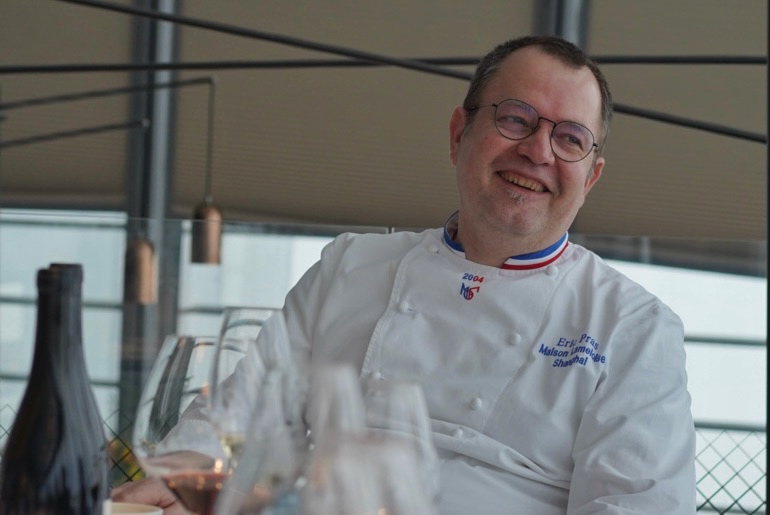
Image by Sophie Steiner/That’s
Maison Lameloise, 68/F, Shanghai Tower, No. 501 Yincheng Zhong Lu 浦东新区银城中路501号上海中心大厦68楼.
[Cover image by Sophie Steiner/That’s]



